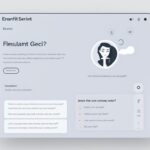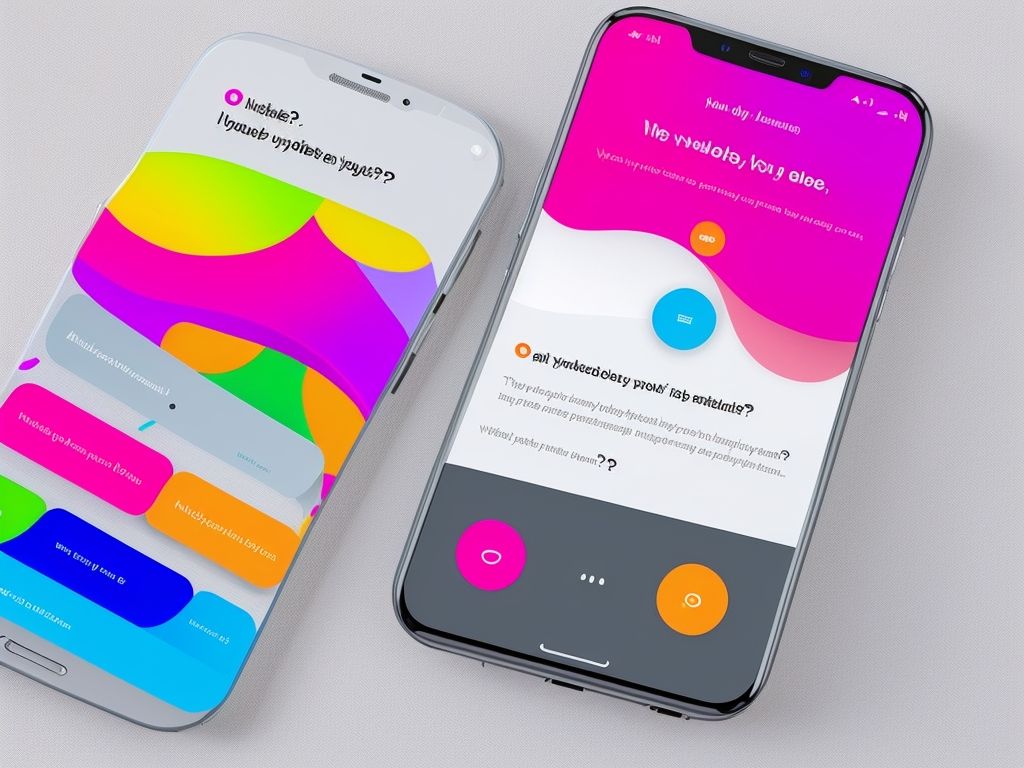Designing a Travel Survey Key: Steps to Gaining Insightful Data

To craft a travel survey, it is vital to understand the steps. This process reveals valuable info that will influence the travel industry.
- First, identify the target audience. This decides who the survey is for and what data is sought. Knowing the demographics and preferences of travelers helps tailor questions to gain meaningful responses.
- Formulate relevant questions. Craft inquiries to get comprehensive and detailed responses. Using open-ended and multiple-choice questions offers both qualitative and quantitative data.
- Then consider the mode of survey administration. Choose an accessible platform for maximum participation. Technology advances allow wider reach. Paper surveys engage those without regular internet access.
- Question sequencing is important too. Logically organizing questions creates an easy flow. This prevents confusion or fatigue, increasing data quality.
- Providing an incentive is great too. Offering rewards like discounts or giveaways motivates people by curiosity and FOMO. This drives engagement, leading to more informative responses.
Designing a travel survey is an involved process. Understanding the key steps unlocks insights to better understand travelers’ preferences and shape memorable journeys.
Importance of designing a travel survey
To gain insightful data for designing a travel survey, understanding its purpose and identifying the target audience are key steps. By thoroughly examining these aspects, you’ll be able to create a survey that effectively captures the desired information from the right audience.
Understanding the purpose of the survey
Don’t miss out! Design a travel survey today and tap into the wealth of information. It can help uncover hidden patterns. Uncover what customers need and want. Know their preferences on destinations, accommodation, transport, activities and more. Measure satisfaction levels in customer service, experience and more. Collect demographic info like age, gender, income and travel habits. Get feedback on initiatives or changes. In the end, use data to make decisions on marketing, product development and customer service. Surveys are the key for unlocking this valuable info.
Identifying the target audience
Identify your target audience. Thinking about their needs, preferences, and expectations. This helps design surveys that capture their travel experiences. For instance, adventure travelers may need questions about activities or destinations.
Identifying the target audience makes analysis of results easier. Segment respondents based on demographics or travel behaviors. Data can be used to improve marketing strategies or create tailored travel packages.
Pro Tip: Research or use customer segmentation techniques to identify the target audience. Get insights into characteristics and motivations of different traveler segments. Design a survey that gives you informative and actionable results.
Key steps to designing a travel survey
To ensure a well-designed travel survey that yields insightful data, craft your approach with the following key steps in mind: Define your objectives and research questions, select an appropriate survey method, create effective survey questions, and design the survey layout and format. Each step plays a crucial role in capturing meaningful information from your survey participants.
Defining the objectives and research questions
For a successful travel survey, certain key elements need to be considered. These include objectives, such as determining customer satisfaction levels, and research questions, like ‘How satisfied are customers with their travel experience?‘. This will help researchers focus on gathering relevant information.
When formulating objectives and questions, it is vital to take into account the target audience’s characteristics and preferences. Also, the objectives must be realistic and achievable.
To maximize the survey’s efficiency, here are some tips:
- Use simple language.
- Include both closed- and open-ended questions.
- Pilot test the survey.
By following these suggestions, researchers can create a travel survey that yields insightful results. Defining appropriate objectives and research questions will result in valuable data for the travel industry.
Selecting the survey method
Selecting the survey method is a major factor in designing a travel survey. It involves finding the best way to get data from respondents. This impacts the accuracy and reliability of the survey results.
The table below shows different methods to select a survey method. It also lists their benefits and drawbacks:
| Method | Advantage | Disadvantage |
|---|---|---|
| Online surveys | Cost-effective and efficient | Limited access to certain demographics |
| Telephone | Allows for immediate response | Lower response rate |
| Face-to-face | High response rate | Time-consuming and costly |
| Postal/mail | Wide reach and cost-effective | Relatively low response rate |
These traditional methods can be combined with newer approaches like mobile app surveys or social media polls. It depends on the target audience and research objectives.
Factors to consider are sample size, budget, time constraints, target population, and type of information.
Fun fact: Statista’s 2020 study found online surveys are the most common way to collect travel-related data.
Creating survey questions
To ensure meaningful responses, craft targeted travel survey questions. Keep them clear and concise. Mix up the question types for a comprehensive data set, including multiple-choice, yes/no, scale rating, and open-ended. Sequence questions logically and keep them succinct. This will yield higher response rates.
Start today and gain valuable insights from travelers! Enhance customer satisfaction and gain a deeper understanding of their needs. Make an impactful survey!
Choosing the right question types
Choosing the right questions for a travel survey is key. The type of questions can determine the quality of responses and insights gained. Consider this table:
| Question Type | Description |
|---|---|
| Multiple Choice | Predefined answer options. Great for categorical data. |
| Rating Scale | Rate something on a scale, e.g. satisfaction or importance. |
| Open-Ended | Freely express thoughts and opinions. Ideal for qualitative insights. |
| Likert Scale | Rate statements on a scale. Analyze attitudes and perceptions. |
Multiple choice and rating scale are great for quantitative data. Open-ended and Likert scale work best for qualitative data. Note that open-ended questions need thoughtful analysis.
Considering the length and clarity of questions
The length and clarity of questions in a travel survey must be thoughtfully crafted. To achieve precise and valuable results from participants, the following factors should be kept in mind:
- Length: Keep questions concise and avoid unnecessary details.
- Clarity: Utilize clear and straightforward language.
- Avoid jargon: Eliminate technical terms that may be unfamiliar.
- Use simple language: Write questions using plain language.
- One question at a time: Present one idea/topic per question.
Striking a balance between short and informative questions is essential. Long and complicated questions can discourage respondents or lead to inaccurate results. Simple language should be used and complex sentence structures should be avoided. Easy to understand words enable respondents to comprehend the meaning of each question.
By considering these guidelines, survey designers can create a questionnaire that maximizes response rates while collecting accurate data. The American Association for Public Opinion Research (AAPOR) states that clear and concise survey questions significantly improve response quality and accuracy.
Designing the survey layout and format
Survey Layout Design
When designing a survey, it is important to create a user-friendly and visually appealing layout. The following guidelines will help you structure your survey with clear sections and headings, while maintaining a consistent format:
- Divide the Survey into Sections: Divide your survey into clear sections to make it easier for respondents to navigate. Each section should focus on a specific topic or theme.
- Use Clear Headings: Use descriptive headings for each section to provide clarity and help respondents understand the context of each question.
- Standardized Fonts, Colors, and Spacing: Use a consistent format throughout the survey, including standardized fonts, colors, and spacing. This will enhance the professionalism of the survey and make it visually appealing.
- Consider Survey Length: Keep the length of your survey in mind when designing. If the survey is long, consider dividing it into smaller sections with progress indicators. This will help respondents track their progress and encourage them to complete the survey.
- Add Visuals and Interactive Elements: To further engage respondents, incorporate attractive visuals or interactive elements into your survey. This could include images, videos, or interactive question formats.
- Create an Enjoyable Experience: Focus on making the survey experience enjoyable for respondents. Use user-friendly interfaces, intuitive navigation, and clear instructions to guide respondents through the survey smoothly.
- Get Actionable Insights: Craft an appealing layout that captures meaningful data. Ensure that the survey questions are well-designed and provide valuable insights that can be used to drive actionable outcomes.
By following these guidelines, you can create a survey layout that is user-friendly, visually appealing, and encourages respondents to fully participate.
Ensuring data quality and validity
To ensure data quality and validity in designing your travel survey, follow these key steps: pre-test the survey, pilot the survey, and analyze and interpret the data. Pre-testing helps to identify any issues or confusion in the survey. Piloting allows for refinement and improvement before launching. Finally, analyzing and interpreting the data helps gain valuable insights from the survey results.
Pre-testing the survey
Test your survey ahead of time with this 6-step guide:
- Choose the size of pre-test group: Aim for a small number of test-takers that match your target group.
- Set up a “survey environment”: Ensure conditions are similar to actual survey. Guide participants for consistency.
- Administer the survey: See how they respond. Note any troubles or confusing questions.
- Get feedback: Ask test-takers about questions, experience, and improvement suggestions. Use interviews, questionnaires, or focus groups.
- Analyze data: Look for patterns, inconsistencies, or struggles in responses.
- Improve and repeat: Use feedback and analysis to make changes. Keep refining until you’re sure of quality and validity.
In addition, remember these tips: Keep it short; use simple language; try different formats; think of cultural differences. Pre-testing and following these ideas will lead to better results when collecting data.
Piloting the survey
To pilot a survey effectively, researchers should take these steps:
- Choose a sample that reflects the target population. This lets researchers know if the survey questions are suitable.
- Pre-test the survey on a small group like the target population. Check for confusing or ambiguous questions, and assess the clarity of each one.
- Talk to people in-person or in focus groups. Understand their comprehension, interpretation, and experience with the survey.
- Evaluate feedback and make changes. Look at the qualitative comments and quantitative ratings. Make improvements to question clarity, response options, and the overall flow.
By following these tips, researchers can find and fix flaws ahead of time. This process increases validity, and produces more meaningful insights from the data.
Analyzing and interpreting the data
Check out this table for insights from the analysis:
| Data Analysis | Key Findings |
|---|---|
| Statistical Analysis | 76% satisfaction rise |
| Trend Analysis | 12% sales drop in Q2 |
| Comparative Analysis | Product A outperformed Product B |
These insights give organizations knowledge to make decisions. Plus, they can find areas to improve or any risks.
Deeper examination shows more info about the data. For example, stats showed a link between customer satisfaction and new service initiatives. And, trends showed decreased spending was the main cause of the sales drop.
Now, I’ll tell you a true story about data analysis. A store manager saw a rise in sales after a marketing campaign. He looked closer and found a connection between higher social media engagement and more sales. With this info, the manager put more resources into digital ads, leading to continued growth.
Conclusion
The necessity of a well-crafted travel survey is paramount. Gaining insightful data is vital for getting an idea of client’s inclinations and improving services.
- A craftily built survey ensures exact data gathering.
- Using clear and precise language upgrades respondent understanding.
- Including a blend of closed-ended and open-ended questions allows for both quantitative and qualitative examination.
- Thoughtfully reflecting on the survey length stops respondent exhaustion and dropout rates.
- Testing the survey with a sample group assists in discovering any defects or complex questions before introducing it to a broader audience.
- Thoroughly analyzing and interpreting the collected data generates actionable insights for business improvement.
Moreover, incorporating visuals such as pictures or interactive elements in the survey design can increase respondent participation and provide more delicate feedback.
Don’t let slip the chance to gain valuable insights that will propel your business forward. Building an effective travel survey is essential for understanding customer needs, making smart decisions, and staying ahead of the competition. Start constructing your survey now!
Frequently Asked Questions
1. Why is it important to design a travel survey?
Designing a travel survey is important because it helps gather insightful data and feedback from travelers. This information can be used to understand their preferences, behaviors, and needs, allowing businesses and organizations to make informed decisions and improve their services.
2. What are the key steps in designing a travel survey?
The key steps in designing a travel survey include determining the survey objectives, identifying the target audience, selecting the survey method (online, phone, in-person), creating clear and concise questions, testing the survey for validity and reliability, and analyzing the collected data.
3. How do I determine the survey objectives?
To determine the survey objectives, think about what specific information you want to gather from travelers. Consider if you want to understand their satisfaction levels, preferences, opinions, or suggestions. Clearly defining the objectives will help structure the survey and ensure you ask the right questions.
4. What are some effective survey methods for collecting travel data?
Effective survey methods for collecting travel data include online surveys, as they are convenient and can reach a wide audience. You can also consider phone surveys for a more personal interaction or in-person surveys for immediate feedback. Choose the method that best suits your target audience and research goals.
5. How can I ensure the reliability of the survey data?
To ensure the reliability of the survey data, you can use techniques such as random sampling, which helps ensure representative results. Additionally, make sure your questions are clear and unbiased to minimize potential response errors. It is also important to avoid leading questions that might influence participants’ answers.
6. How should I analyze the collected survey data?
To analyze the collected survey data, start by organizing the responses and coding the open-ended answers. Use statistical software or tools to generate descriptive statistics, such as frequencies and averages, to identify trends or patterns in the data. You can also perform more advanced analysis, like cross-tabulations or regression analysis, depending on your research objectives.
- What Polls Reveal About Sleeping Together Early and Long-Term Relationship Success - July 7, 2025
- How to Design a Hard Harry Potter Trivia Challenge - October 4, 2023
- How to Design a Dear Peachie Makeup Preference Poll - October 4, 2023











